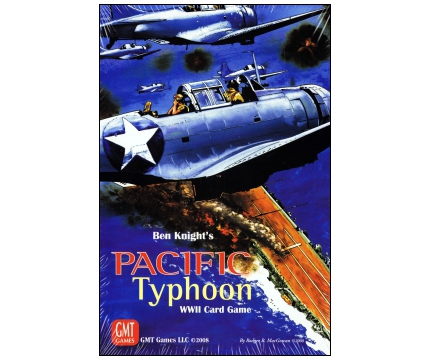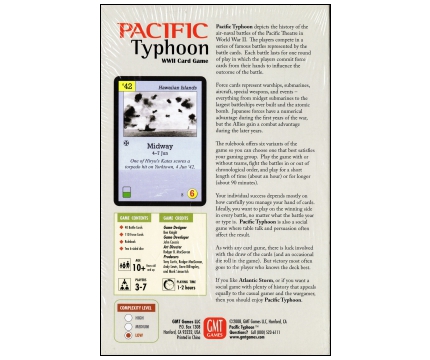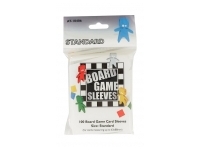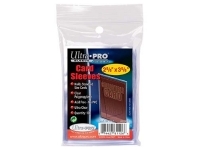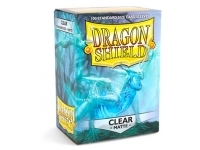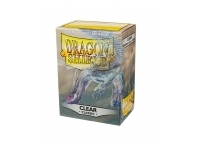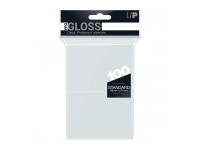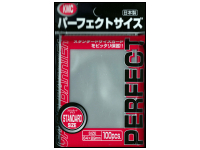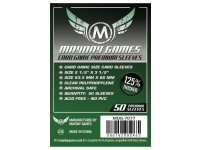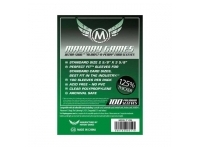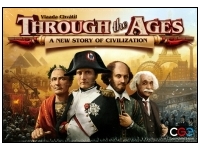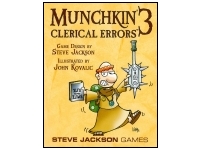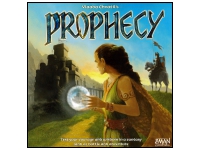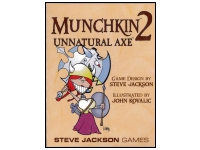-
-
-
-
-
-
Din kundvagn
Din kundvagn är tom. -
-
-
-
-
-
-
Pacific Typhoon
-
6.61 6.61 / 10, (817 röster) - Sätt betyg
-
-
Antal spelare: 3 - 7
Speltid: 60 - 120 (min)
Ålder: 10+
-
Regelspråk:

Försälj. rank: 11561/16222
-
-
249 kr
Ej tillgänglig
Tyvärr går det inte att beställa Pacific Typhoon längre.
Det är inte heller troligt att vi kommer få hem produkten igen.
Önskelista: För att kunna använda önskelistan måste du ha ett användarkonto och vara inloggad.
-
-
-
Produktbeskrivning
Pacific Typhoon is a strategy card game for 3-7 players, ages 10 to adult. The game uses the same system that first appeared in the popular 1998 Avalon Hill card game Atlantic Storm.
The game setting is the naval and air war in the Pacific theatre during World War II. Pacific Typhoon depicts the history of the air-naval battles of the Pacific War with 40 battle cards, each of which represents an historical naval or air battle such as Pearl Harbor, Midway, Surigao Strait, etc. Players compete by fighting a non-sequential series of twenty of these battles. A battle lasts for one round of play, so each player gets to play once per battle. The round-leader starts by picking one of two battle cards (he discards the unpicked one). The chosen battle card determines the year of battle. The battle card is also worth a certain number of victory points and resources to whoever wins it. The round-leader alternates after each battle, and the game ends after 20 battles (when the Battle Card deck is exhausted).
Players are not assigned to sides. Instead, each player has a hand of force cards that typically includes both Allied and Japanese cards. The force cards represent warships, submarines, aircraft, special weapons, and events. Non-event cards have three separate combat values: Air, Surface, and Sub. For example, the battlecruiser Kirishima has combat values of 1 air, 4 surface and 0 sub; the submarine Flasher has combat values of 0 air, 1 surface and 3 sub; the Zero fighter (Sakai) has combat values of 3 air, 0 surface and 0 sub. Force cards are also worth victory points because they can be destroyed in battle.
After the round-leader selects the battle card, he announces the "suit" of battle: Air, Surface, Sub or Combined. Only the combat values in the announced suit will affect the outcome of the battle. In a Combined battle, the combat values of all three suits are added together. The round-leader also announces the time of battle: Day or Night. Some force cards are only playable in a day battle (for example, the aircraft carrier Lexington), a few are only playable in a night battle, but most are playable in day or night battles. The round-leader then gets to play from his hand. He may play on one side or the other (but not both sides together). Each player after him in turn may then play on one side or the other.
Pacific Typhoon is very much a social game. Table talk during the round can be very important toward your success. If you can't win the battle for yourself, you may at least gain some victory points from destroyed enemy forces by playing on the winning side. For this reason, you are always looking to the other players to provide assistance to the same side you play on, or to play on the opposite side of whoever appears to be winning the game. There is often an attitude of "I'll back you up now if you'll back me up later." Since a player can play on either side during a battle, everyone is a potential ally and a potential enemy. This recreates the uncertainty that was so prevalent during the real battles: Where are the enemy forces? Will reinforcements come to your aid? "Where Is Repeat Where Is Task Force 34 the World Wonders?" Are enemy submarines lurking ahead? Will you be the ambusher or the one who is ambushed?
If the players all play on the same side, then the one who contributed the highest combat value in the declared suit wins the battle card as his spoil. If cards from both sides are involved in the battle, then the side with the greatest total combat value in the declared suit wins the battle, and the winning player who contributed the highest combat value on that side gets to divide the spoil cards. Spoil cards include the battle card and the enemy force cards that were involved in the battle. The winner keeps a spoil card for himself but must give a spoil card to each player who contributed to his side's win before he can keep a second spoil card from the battle, and so forth until all of the spoil cards are distributed.
The allocation of spoils (the piratical aspect of the game) ultimately determines the game winner, because the player with the most victory points at the end wins. Spoil cards have different victory point values, and it is common for players to negotiate about the distribution of spoil cards before the battle outcome has even been decided. Can you tip the battle in favor of one side or the other? If you can, maybe you should use that power to leverage the best deal on spoils for yourself.
Even if you lack good negotiation skills, you can win the game repeatedly through careful card management. The game includes battles in five different years, from 1941 to 1945. The battles are not fought in chronological order, so the first battle might occur in 1944, and the second one in 1942, etc. Each force card is playable beginning on a certain year and any year after that. For example, the destroyer escort England can be played in a 1944 battle or later.
There are only four battle cards for 1941, but with the exception of Wake they are worth a high number of victory points and resources. (Resources you win allow you to increase your hand size.) However, only 25% of the force cards are playable in 1941. So a careful player might hold on to a 1941 card waiting for one of those battles to appear rather than use that card in a late-war battle. There are ten battle cards for 1942, and just over half of the force deck is playable then. By 1943, almost 70% of the force deck is playable, but the 1943 battles are relatively poor in terms of victory points and resources. The 1944 battles are more valuable, and 90% of the force cards are playable at that time. There are only seven battle cards for 1945, but they include some of the most valuable ones, and all force cards are playable then. At the start of the game, the Japanese have a slight combat advantage during the early years, and the Allies have a slight combat advantage during the late years. However, losses during battles can quickly erode those starting advantages.
Careful card management means trying to have a hand of cards with good flexibility. Ideally, you want to be able to play on either side no matter what the year, suit or time of battle is. Careful card management also means closely observing the card plays and looking for victims and fate cards. Certain cards are fated to immediately destroy other force cards or to count as double-combat value in a battle, so if you see a victim in play and you have the fated card, play it during your turn to gain that spoil without sharing or negotiation. If you have a victim card in your hand, it is best if you can remember what card is fated against it. Then you can watch for that card or try to minimize the opportunities where it can be played against you.
A typical game with four or five experienced players can be finished in 1 hour (a little longer for six players). As with any card game, there is luck involved with the draw of the cards (and an occasional die roll in this game). But victory most often goes to the player who knows the deck best. If you like Atlantic Storm, or if you want a social game with plenty of history that appeals equally to the casual gamer and the wargamer, then you should enjoy Pacific Typhoon.
-
Kategori: Andra världskriget (1939-1945), Kortdragande, Hand management
Tillverkare: GMT Games
Länkar: Tillverkarens hemsida, BoardGameGeek
Taggar: Lägg till/editera tags
Recension(er)
Sticktagning med twist - 7/10
Pacific Typhoon är ett kortspel med tema från andra världskriget.
Varje spelare har en hand med "force"-kort som är är en enhet tillhörande antingen de allierade eller japanska styrkorna och valören på korten utgörs av poäng fördelade över kategorierna ubåt, fartyg och flygplan (som kan ses som färgerna i en vanlig kortlek).
I början av varje runda dras ett "battle"-kort med ett historiskt slag som utspelar sig mellan 1941 och 1945 och den förste spelaren väljer ett spelbart kort ur sin hand från valfri armé och väljer också "färg". Efterföljande spelare följer färg eller står över genom att slänga kort. När alla spelare lagt kort summeras poängen i aktuell färg för de japanska respektive allierade styrkorna och en vinnande sida utses. Den som bidragit med det högsta kortet på den vinnande sidan delar ut de spelade korten från den förlorande sidan samt "battle"-kortet (som alla har en individuell "victory"-poäng) Efter det dras ett nytt "battle"-kort och nästa spelare börjar. Den som samlat flest "victory"-poäng från besegrade kort och vunna slag vinner spelet.
Konceptet är enkelt i grunden men det finns flera mekanismer som inte återfinns i ett traditionellt sticktagningsspel. Till exempel kan vissa kort slå ut andra direkt så spelaren tar poäng innan striden är slut, och en del kort kan läggas som bonusar på andra kort eller modifieras med tärningsslag. Dessa extra något mer oberäkneliga element gör enligt mig spelet lite mer spännande.
Spelet är som roligast om man spelar flera (gärna fem personer eller mer) och än bättre är det om alla spelat förut och känner till vilka kort som finns i leken. Detta för att maximera möjligheterna till taktik i varje stick.2014-05-21 av: CebbRecension 1 av 1
-
-
Plastfickor till Pacific Typhoon
-
Det är totalt 150 st kort som passar i någon av dessa plastfickor
-
-
Personer som har köpt Pacific Typhoon har också köpt
-
Pacific Typhoon
249 kr
Ej tillgänglig
-
-
Kundtjänst
Om du har några frågor eller funderingar är det bara att höra av dig till oss.
E-post: info@worldofboardgames.com
Telefon: 090 - 205 92 11
Adress: Björnvägen 11, 906 40 UMEÅ -
Leveranstid och fraktpriser
Ordrar med varor vi har i lager, och som kommer in innan 12:00 på vardagar, skickas normalt samma dag och har sedan en leveranstid på 1-3 dagar.
Fraktkostnaden är 49 kr med Schenker - Ombud, 75 kr med Postnord - Ombud och 175 kr för hemleverans med Postnord. Företagspaket kostar 99 kr. Du ser din fraktkostnad när du går till kassan. Vid beställningar för minst 2000 kr ger vi fri frakt, gäller dock endast Schenker - Ombud och för privatpersoner.
-
-
-






